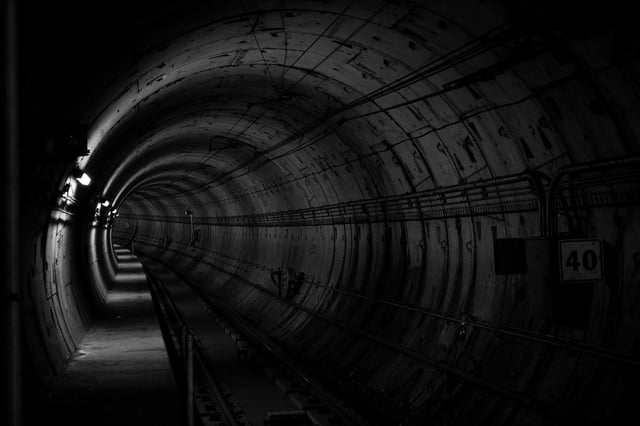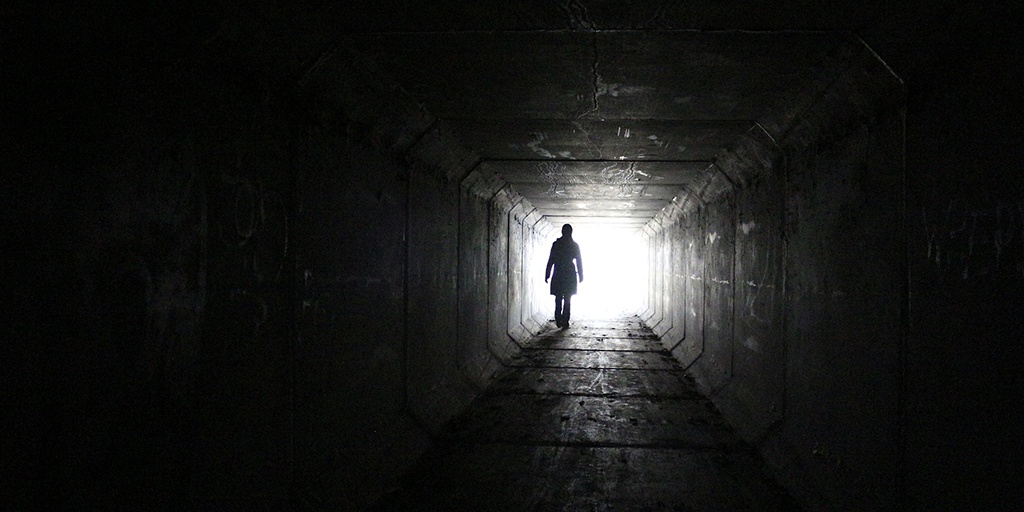As you’ve rushed through the city streets on your daily activities, have you ever wondered what’s going on beneath your feet? Have you ever wondered if the NYC Building Code applies to the massive structures down there? We sure did, so we looked into the answers – and we have to admit: our jaws dropped at the information we found.
Read on to discover the details about the bizarre underground world of the New York City tunnels. We warn you though: the truth is unsettling, so you’ll want to make sure you read this with the lights on.
The Mole People – Living Underground
The NYC subway system was constructed at the turn of the century (1904), right when reports of people living underground dominated the public imagination. Cities across the world were expanding infrastructure around that time and the public wanted to know what lay beneath the streets. Science fiction writers were only too happy to oblige the public interest; Jules Verne, H. G. Wells, and others described hidden lands and secret species that lived barely below the crust of the earth.
Shockingly, it turns out that real life is stranger than science fiction: we’ve got our own secret people dwelling underground in New York City. They’re known as the Mole People.
Who Are the Mole People?
We certainly aren’t brave enough to face our fear of pitch-black, abandoned subway tunnels with rat-infested, trash-strewn walkways, but if you’re brave enough to go down there, you’ll probably find Mole People.
New Yorkers have always known that a small group of the homeless choose to live underground (or at least we’ve heard the legends), and we’ve therefore hurried past open manhole covers we’ve come across late at night. However, it wasn’t until the 1990s that the issue of underground living finally hit the spotlight.
John Tierney’s 1990 New York Times article, “In Tunnel, ‘Mole People’ Fight to Save Home,” detailed Amtrak’s eviction of inhabitants in the Freedom Tunnel as well as the history of the tunnel’s habitation. The abandoned tunnel had previously been used for freight trains, but was shut down in 1980, leaving the large space generally unmonitored.
In 1991, Amtrak decided to open the line back up. When they ventured underground to assess the amount of work they’d have to do, they were surprised to find nearly 100 people who lived under strict, established community rules, including:
- No stealing
- No loud noise
- No drugs (that one was a bit flexible)
Though most of the Mole People admitted that their unconventional lodging situation was originally intended to be a temporary solution, some remained living there for more than a decade, such as Bernard Isaac, the “Lord of the Tunnel,” and Brooklyn, the friendly, singing spokeswoman of the Mole People.
Separating Fact from Fiction
In 1993, Jennifer Toth kicked off a public fervor around the many inhabited tunnels in New York City with her book, The Mole People: Life in the Tunnels Beneath New York City. Though written as a nonfiction memoir of meeting and befriending Mole People all over the city, the book has been heavily criticized over the years. Noted NYC subway historian Joseph Brennan painstakingly detailed every questionable claim in Toth’s book and, after an interview with the author and a surprising disavowal by a source, Cecil Adams of The Straight Dope column also asserted that the book was most likely embellished.

What we can verify is that a surprisingly large community lived in the Freedom Tunnel from the 1970s until 1991. In 1995, when trains rushed by at 80 miles per hour and endangered the Mole People’s lives, Amtrak lead a new campaign to evict the remaining tunnel residents. At that point, social workers such as Mary Brosnahan got involved, using $9 million in grant money to get the Mole People into government-subsidized permanent housing aboveground – and also get them into much-needed substance-abuse treatment programs.
Although the track has been repeatedly cleared out and Amtrak police conduct regular sweeps, a small number of tunnel dwellers remain to this day. These are characterized by Anthony Taille in his fascinating essay, “The Truth About New York’s Legendary Mole People,” and by urban photographers Andrea Star Reese and Margaret Morton who take haunting photos of life in the tunnels. Documentarian Marc Singer also recorded life underground in his film Dark Days. What these pieces make clear is that life down below, while quieter and less dangerous than homeless life aboveground, is still a harrowing experience. Even with the dangers, however, many of the Mole People don’t describe themselves as “homeless,” since they’ve found a supportive, loyal community in their underground neighborhoods.
Other Secrets of the New York City Tunnels
In addition to Mole People, the NYC tunnels draw urban explorers like super adventurer Erling Kagge, who was the first man to walk to the North Pole alone. He also hiked the South Pole and summited Mt. Everest before facing the underground.
There’s more. Artists frequently descend into the tunnels to paint (check out the Underbelly Project to watch artists at work in the abandoned tunnel), and young nightclubbers host raves and dance parties in the depths. One subway aficionado took on the task of personally excavating a tunnel to learn what was in it.
It seems the tunnels offer something for everyone.
Why Are So Many People in the Tunnels?
Considering that it’s illegal to access an abandoned tunnel, it may seem surprising that so many people venture into them each day.
In fact, the New York City tunnel system isn’t governed or monitored by any one group. It’s a mismatch of privately-owned tunnels such as Amtrak’s Freedom Tunnel, NYC DEP-run sewage tunnels, and NYC DOT-run tunnels that are leased to and managed by the MTA. The city has rules governing tunnel access and behavior, but enforcing them can be difficult with more than 6,450 miles of dark, underground tunnels to patrol.
Keeping people out is important because the tunnels are riddled with outdated infrastructure. In 2005, outdated electrical relays from the 1930s were destroyed in the A-and-C fire started by one of the Mole People for warmth, and the damage halted subway travel on two lines for nearly two weeks.
Many tunnels are also sealed off for safety, but they’re likely to be uncovered as accidents, derailings, and other mishaps become more frequent due to the weakened infrastructure after mass tunnel flooding during Hurricane Sandy in 2012, as well as a general lack of city funding for maintenance. We’re personally holding out for the uncovering of the legendary 76th Street subway station in Queens, often called the “Roswell” of the New York City subway system because it’s location is so hotly contested.
Rebuilding the Underground from the Ground Up – Could NYC Building Code Help?
In a way, it’s unfortunate that clear, uniform regulations like the NYC Building Code don’t apply to underground infrastructure. If they did, the city could address so many issues, helping the Mole People to live more safely, showcasing underground art projects in a public-friendly venue, and updating critical, yet aging parts of the sewers and subways with up-to-date structures.
Until that happens, we can all continue to wonder at the lives being lived or enriched in the city below our feet – and we can look forward to uncovering additional buried mysteries as we continue to discover more about the New York City tunnels.
Interested in learning more about New York’s secrets and legends? Subscribe to our blog to get fascinating updates regularly.







